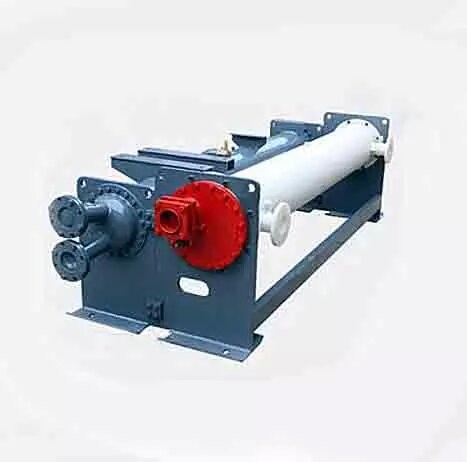Corrosion Protection for Air Cooled Heat Exchangers (Part One)
Air cooled heat exchangers, pivotal equipment in the petrochemical industry for heat exchange processes, face challenges in their tube bundles due to harsh conditions involving high temperatures, pressures, and corrosive environments. The corrosion performance of these tube bundles directly influences the safety and stability of equipment operation. This article meticulously analyzes common corrosion types affecting tube bundles and proposes protective measures aimed at enhancing the lifespan of air cooled heat exchangers .

1. Pitting Corrosion
When bearing materials contain dissolved oxygen and hazardous anions like chloride ions, the surface of air cooled heat exchanger tube bundles may exhibit minimal or no corrosion initially. However, over time, certain areas may develop cavities or pitting. The factors influencing the design and manufacturing of these tube bundles include the impact of heat treatment aging temperature.
For stainless steel tube bundles, post-weld heat treatment is generally avoided, except for austenitic stainless steel, which benefits from solution treatment for optimal pitting resistance. Other stainless steel materials may undergo heat treatment, affecting the propensity for pitting corrosion. The surface finish of metal tube bundles also plays a role, with improved finishes enhancing pitting resistance. However, cold working can weaken pitting resistance. Pitting corrosion tests, encompassing chemical immersion, electrochemical measurement, and field tests, comprehensively evaluate factors such as depth, density, and speed rate of pitting.
2. Crevice Corrosion
Crevice corrosion arises when heat transfer media stagnate in small crevices between metals or between metal and non-metal surfaces (typically 0.025 mm-0.1 mm). This corrosive media contains anions that weaken material strength and increase local stress. In air cooled heat exchangers, crevice corrosion commonly occurs in plate lap joints, flange seal surface joints, gasket seals, and between base pipes and liner tubes.
In production design, expanding the base pipe and liner tube is a preventive measure to eliminate gaps. Air cooled heat exchangers often employ wire plug sealing structures sealed by metal gaskets, where crevice corrosion may generate due to factors like pressure, temperature, and vibration. This can potentially lead to gasket sealing failure, emphasizing the critical importance of addressing crevice corrosion in design considerations.

1. Pitting Corrosion
When bearing materials contain dissolved oxygen and hazardous anions like chloride ions, the surface of air cooled heat exchanger tube bundles may exhibit minimal or no corrosion initially. However, over time, certain areas may develop cavities or pitting. The factors influencing the design and manufacturing of these tube bundles include the impact of heat treatment aging temperature.
For stainless steel tube bundles, post-weld heat treatment is generally avoided, except for austenitic stainless steel, which benefits from solution treatment for optimal pitting resistance. Other stainless steel materials may undergo heat treatment, affecting the propensity for pitting corrosion. The surface finish of metal tube bundles also plays a role, with improved finishes enhancing pitting resistance. However, cold working can weaken pitting resistance. Pitting corrosion tests, encompassing chemical immersion, electrochemical measurement, and field tests, comprehensively evaluate factors such as depth, density, and speed rate of pitting.
2. Crevice Corrosion
Crevice corrosion arises when heat transfer media stagnate in small crevices between metals or between metal and non-metal surfaces (typically 0.025 mm-0.1 mm). This corrosive media contains anions that weaken material strength and increase local stress. In air cooled heat exchangers, crevice corrosion commonly occurs in plate lap joints, flange seal surface joints, gasket seals, and between base pipes and liner tubes.
In production design, expanding the base pipe and liner tube is a preventive measure to eliminate gaps. Air cooled heat exchangers often employ wire plug sealing structures sealed by metal gaskets, where crevice corrosion may generate due to factors like pressure, temperature, and vibration. This can potentially lead to gasket sealing failure, emphasizing the critical importance of addressing crevice corrosion in design considerations.

